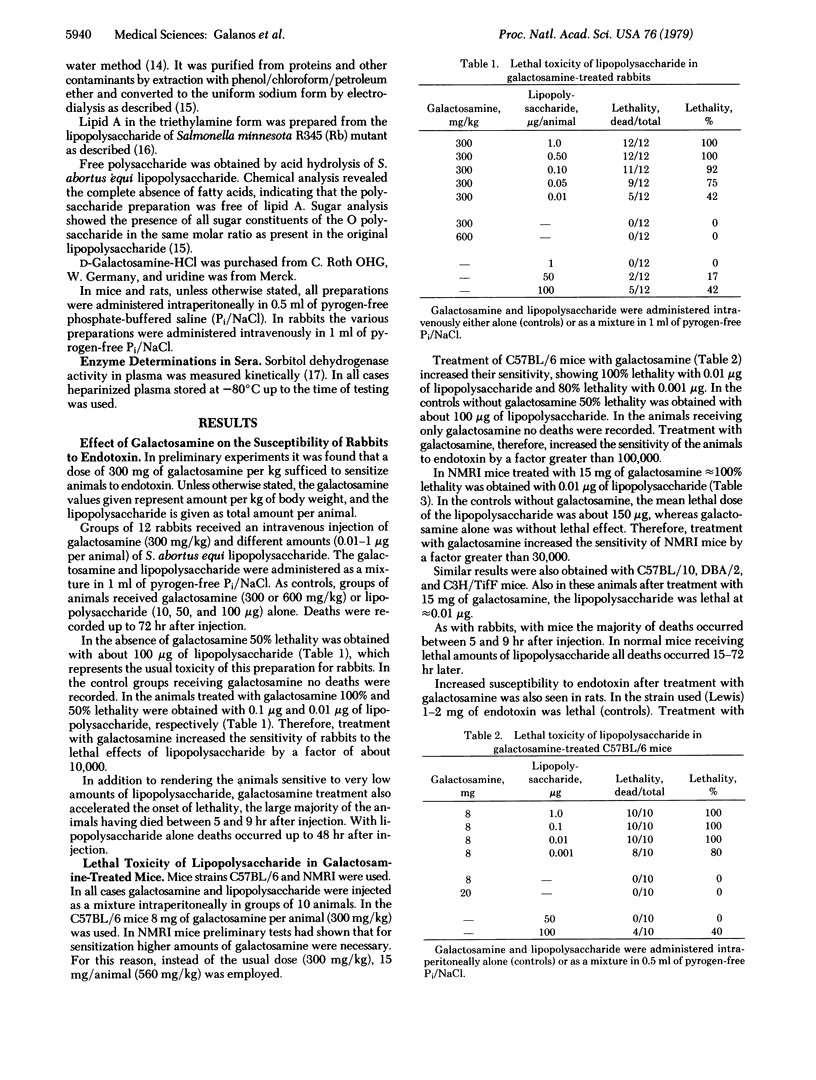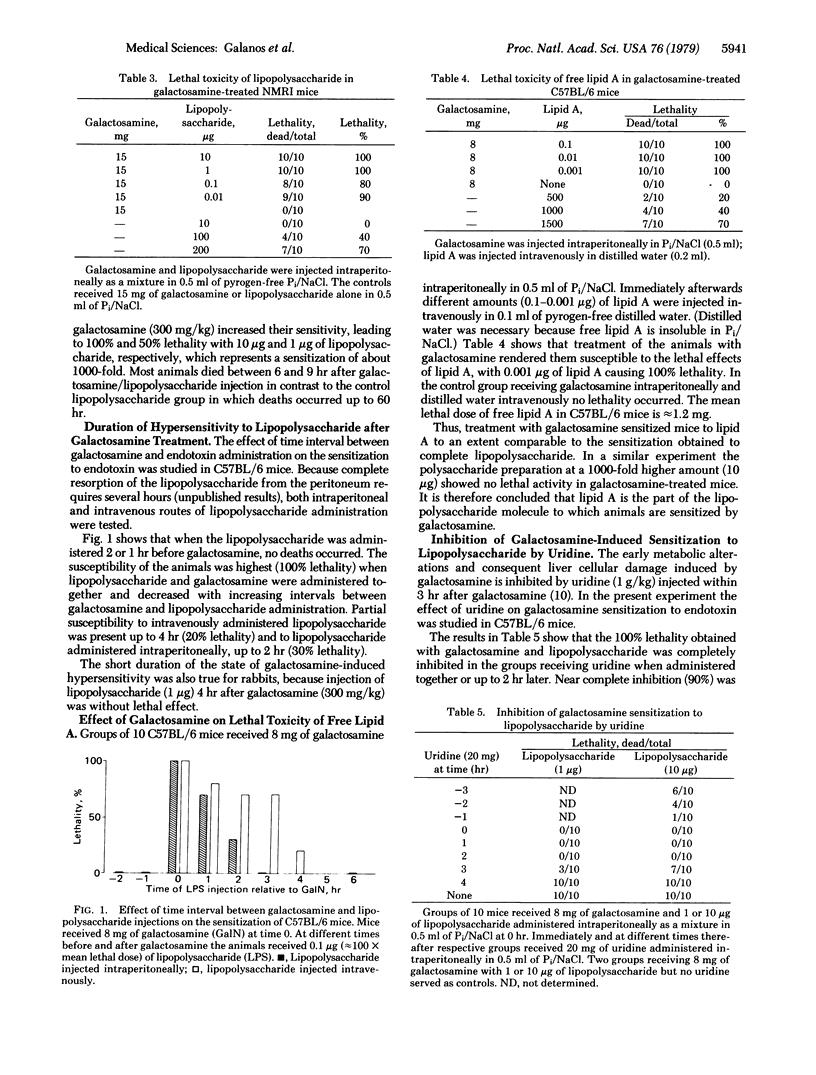Abstract
Treatment of rabbits, rats, and mice with D-galactosamine increased their sensitivity to the lethal effects of lipopolysaccharide several thousand fold. The susceptibility of the animals was highest when the lipopolysaccharide was injected together with galactosamine and decreased successively when injection was carried out 1, 2, and 3 hr later. Sensitization was absent when the lipopolysaccharide was administered 1 hr before or 4 hr after galactosamine. The onset of lethality after treatment with galactosamine and lipopolysaccharide occurred faster than with lipopolysaccharide alone; usually all animals died 5-9 hr later. The galactosamine-induced sensitization to lipopolysaccharide could be reversed by uridine which is known to inhibit the early biochemical alterations induced by the amino sugar in the hepatocytes. Although galactosamine is known to exhibit hepatotoxic activity inducing ultimate necrosis of the hepatocytes, the data so far suggests that the sensitization to lipopolysaccharide is related only to the early metabolic effects of the hexosamine.
Full text
PDF




Selected References
These references are in PubMed. This may not be the complete list of references from this article.
- BERRY L. J., SMYTHE D. S. EFFECTS OF BACTERIAL ENDOTOXINS ON METABOLISM. VII. ENZYME INDUCTION AND CORTISONE PROTECTION. J Exp Med. 1964 Nov 1;120:721–732. doi: 10.1084/jem.120.5.721. [DOI] [PMC free article] [PubMed] [Google Scholar]
- Bachmann W., Harms E., Hassels B., Henninger H., Reuitter W. Studies on rat liver plasma membrane. Altered protein and phospholipid metabolism after injection of D-galactosamine. Biochem J. 1977 Sep 15;166(3):455–462. doi: 10.1042/bj1660455. [DOI] [PMC free article] [PubMed] [Google Scholar]
- Bauer C. H., Lukaschek R., Reutter W. G. Studies on the golgi apparatus. Cumulative inhibition of protein and glycoprotein secretion by D-galactosamine. Biochem J. 1974 Aug;142(2):221–230. doi: 10.1042/bj1420221. [DOI] [PMC free article] [PubMed] [Google Scholar]
- Decker K., Keppler D. Galactosamine hepatitis: key role of the nucleotide deficiency period in the pathogenesis of cell injury and cell death. Rev Physiol Biochem Pharmacol. 1974;(71):77–106. doi: 10.1007/BFb0027661. [DOI] [PubMed] [Google Scholar]
- Galanos C., Lüderitz O. Electrodialysis of lipopolysaccharides and their conversion to uniform salt forms. Eur J Biochem. 1975 Jun;54(2):603–610. doi: 10.1111/j.1432-1033.1975.tb04172.x. [DOI] [PubMed] [Google Scholar]
- Keppler D., Lesch R., Reutter W., Decker K. Experimental hepatitis induced by D-galactosamine. Exp Mol Pathol. 1968 Oct;9(2):279–290. doi: 10.1016/0014-4800(68)90042-7. [DOI] [PubMed] [Google Scholar]
- Lesch R., Deus B., Reutter W. The appearance of D-galactosamine-induced hepatitis and generalized edema in adrenalectomized rats. Beitr Pathol. 1975 Sep;156(1):32–45. doi: 10.1016/s0005-8165(75)80083-7. [DOI] [PubMed] [Google Scholar]
- Liehr H., Grün M., Seelig H. P., Seelig R., Reutter W., Heine W. D. On the pathogenesis of galactosamine hepatitis. Indications of extrahepatocellular mechanisms responsible for liver cell death. Virchows Arch B Cell Pathol. 1978 Feb 14;26(4):331–344. doi: 10.1007/BF02889560. [DOI] [PubMed] [Google Scholar]
- SUTER E., ULLMAN G. E., HOFFMAN R. G. Sensitivity of mice to endotoxin after vaccination with BCG (Bacillus Calmette-Guérin). Proc Soc Exp Biol Med. 1958 Oct;99(1):167–169. doi: 10.3181/00379727-99-24282. [DOI] [PubMed] [Google Scholar]
- Selye H., Tuchweber B., Bertók L. Effect of lead acetate on the susceptibility of rats to bacterial endotoxins. J Bacteriol. 1966 Feb;91(2):884–890. doi: 10.1128/jb.91.2.884-890.1966. [DOI] [PMC free article] [PubMed] [Google Scholar]


